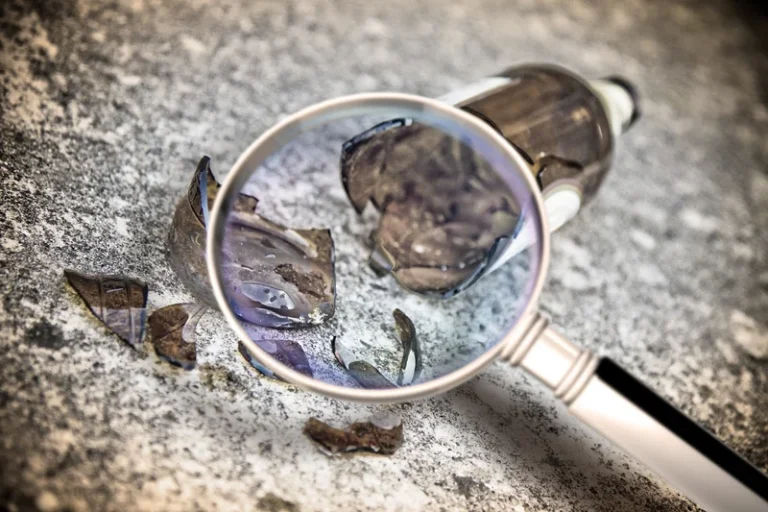Sober living
“Alcoholic Nose:” Is Alcohol Really the Cause?

Topical and oral medications are often the first line of treatment for rosacea and rhinophyma. Early intervention with medications can prevent the condition from worsening and reduce the need for more invasive treatments later on. The initial stages of rhinophyma often involve a persistent red nose and swelling. This is due to the dilation of blood vessels and increased blood flow to the area. Early treatment can help manage these symptoms and prevent further progression. Rosacea affects the nose more in men and the cheeks more in women, which makes men much more likely to get rhinophyma than women.

Alcoholic Nose: Can Alcohol Affect the Appearance of the Nose?
- A common misconception is that alcoholic nose is solely caused by excessive alcohol consumption.
- Rhinophyma is often referred to as an “alcoholic nose,” a label that carries significant social stigma.
- Several surgical techniques have been described in the management of rhinophyma.
This treatment uses targeted beams of light to shrink blood vessels and reduce the size of the nose. Multiple sessions may be required for optimal results, and the procedure is generally well-tolerated with minimal downtime. Understanding the true causes of rhinophyma is crucial in dispelling myths and providing effective treatment.
Causes and Risk Factors of Rhinophyma

If a person suffering from rosacea also has rhinophyma, the flushing in the face due to alcohol can increase the visibility of their rosacea and rhinophyma symptoms. That means someone drinking heavily may show flushed cheeks and an enlarged nose with a red or purple tint if they have rosacea. Over the years, several quirky and interesting terms for alcoholics’ noses took off and became popular to refer to people with larger or purplish-red noses.
- Treatment for alcoholic nose usually involves visits to both dermatologists and plastic surgeons, who then may work together in treating your rhinophyma.
- Current research indicates that people with rhinophyma often have a genetic predisposition to or family history of rosacea, especially if treatments for their rosacea prove ineffective.
- While the idea that alcohol causes rhinophyma has been popularized in movies and illustrations, studies do not support this stigma.
- Rhinophyma, commonly referred to as “alcohol nose,” is a condition characterized by an enlarged and reddened nose.
- You can only use rhinophyma as a starting place for someone you know well.
Treatments for rhinophyma or “alcoholic nose”
If your rhinophyma is more advanced, laser therapy may be a worthwhile treatment option. Pamela was successfully treated first with Ultherapy and a debulking procedure, along with a CO2 resurfacing with laser surgery. Both alcohol addiction and rhinophyma can be difficult to treat and manage by yourself, and professional help is typically recommended when treating both, especially at the same time.
Impact on Mental Health and Self-Esteem
Unfortunately, the medical definition for it faded into doctors’ circles as the term alcoholic nose took off in modern society. An alcoholic nose, often called a whiskey nose, drinker’s nose, gin nose, or gin blossom nose, is a common way to refer to a large purple-tinted nose. The term “alcoholic nose” has an interesting history and an even more interesting scientific explanation. Besides the unsightly appearance of the nose due to alcohol addiction, there are other effects of rhinophyma that you should watch out for more than it is merely a “red nose,” “bulbous nose,” or “drinker’s alcoholic nose nose.” The most common side effect of rosacea in people who drink is flushed skin.

Rosacea Review – Newsletter of the National Rosacea Society
But there is hope for full recovery from long-term alcohol abuse by receiving quality help from an alcohol treatment facility. These enlarged blood vessels can give your skin a spidery, bloodshot appearance, and increase flushing around the face and chest. Widened blood vessels mean that more blood can travel just below the skin’s surface, which causes flushing or a reddened appearance. Medical professionals have found that rhinophyma develops when milder forms of rosacea, like ocular rosacea, are left untreated. There is some evidence that suggests genetic predisposition may play a role in developing rhinophyma.
What Is Alcoholic Nose & How Does It Happen?
This redness may be accompanied by a noticeable enlargement of the nasal tip and an increase in the size of pores on the facial skin. Recognizing the early signs of rosacea and seeking appropriate treatment can help prevent the advancement to rhinophyma. It is also advised for individuals with rosacea or rhinophyma to limit alcohol consumption to avoid exacerbating the condition. Treatment options for rhinophyma typically involve medical therapies and surgical interventions. The average alcohol intake of those with rhinophyma was 14 units per week, versus just 3 units of alcohol per week among the control group. Analysis revealed a statistically significant correlation between alcohol intake and severity of rhinophyma, with a heightened risk among moderate drinkers and the highest risk among excessive drinkers.

The condition is understood and treated as a condition that is totally separate from alcohol use disorder. Transcend Recovery Community family of sober living homes provides a safe place for those undergoing mental health and addiction treatment to live with like-minded peers. For some individuals with alcohol addiction, it can be more effective to enroll in a treatment program outside of their local community. This way, they are not bombarded with social pressures and stigma close to home. Below are some of the most common physical indications that you or a loved one may have alcoholic nose.
What is an Alcoholic Nose?
- Analysis revealed a significant correlation between alcohol intake and severity of rhinophyma, with a heightened risk among moderate drinkers and the highest risk among excessive drinkers.
- However, many skin specialists and experts view this as a misrepresentation of the condition’s true nature.
- If you think that rosacea and rhinophyma are what you have, you should contact your physician and discuss this right away.
While alcohol nose does not directly imply addiction, it can be a visible manifestation of long-term alcohol abuse for some people. If you or someone you know struggles with alcohol addiction, The Hope House can help. There are many different surgical options that use plastic surgery techniques. During a rhinophyma surgery, the physician will remove the extra skin that builds up on the nose and reduce skin growths to help the nose return to its normal shape, size and appearance. While the idea that alcohol causes rhinophyma has been popularized in movies and illustrations, studies do not support this stigma.
Dermatology experts recommend anti-acne treatments, moisturizing your dry skin caused by rosacea, and using sunscreen lotions. Unfortunately, doctors are not yet clear on the direct cause of rhinophyma. It shows up more frequently Twelve-step program in men than women and is common among those with fair skin and European ancestry. Drinking alcohol enlarges the blood vessels, which makes them more susceptible to bursting.


